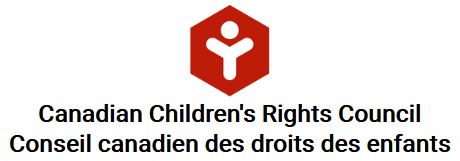This website addresses the issue of all sources of financial support for Canadian children and youths.
Child Poverty In Canada
The Government of Canada
Although Canada is a wealthy country, one in six children, or 1,071,000 children, still lives in poverty.
HOUSE OF COMMONS
"This house seeks to achieve the goal of eliminating poverty among Canadian children by the year 2000."
House of Commons unanimous all party resolution, November 24, 1989.
The Canadian Government is ultimately the legal guardian of all Canadian children.
The Canadian Government admittedly has the financial resources to provide child financial support for all of our children living in poverty. In effect, all political parties admitted they owed this child support in the unanimous all party resolution of November, 1989.
"They are the biggest deadbeat support payers in Canada." - the president of the Canadian Children' s Rights Council, May, 2001.
The UN currently ranks Canada 17th out of 23 industrialized countries seventh from the bottom when it comes to child poverty
Child Financial Support
Government of Canada
-
Income Tax benefits and Credits
-
Other programs

Governments of Provinces / Territories
-
Social Assistance Programs
-
Child maintenance (child financial support) collection agencies
-
Housing Assistance
-
Youth Shelters
-
-
Student Loans
-
Other programs
Municipal Governments
-
Social Assistance
-
Shelters
Food bank use by B.C. children up 42 per cent
CTV, Canadian Press, various media throughout Canada, November 11, 2004
VICTORIA A national report on the use of food banks by children in Canada has put British Columbia on its trend watch.
The B.C. Liberal government said it's concerned about the results which found 41.7 per cent Read More ..ildren needed emergency food in B.C. in 2004 over 2003 - some 8,000 Read More ..ds. Human Resources Minister Susan Brice, however, said the conclusions in the Canadian Association of Food Banks' annual report reflect a North American problem.
The association's annual national HungerCount survey also found that in Saskatchewan nearly 2,000 Read More .. children needed food banks in 2004, an increase of 24 per cent from 2003. Read More ..
Report on child poverty urges $18B in spending
Canadian Press, May. 4, 2004, The Toronto Star and various other newspapers
Report urges $18 billion boost Also recommends
raising taxes
The Toronto Star, LAURIE MONSEBRAATEN, STAFF REPORTER, May 5, 2004.
York teachers learn signs of child poverty
Program addresses growing income gap in affluent board
High school students without money face special challenges
TESS KALINOWSKI, EDUCATION REPORTER, Toronto Star, page F5, January 16, 2004
Single dads are sick and tired of being labelled "deadbeats" when it comes to paying child support. And data suggest they have good reason to be upset.
Fox News, U.S. By Liza Porteus, Friday, August 9, 2002
Don't cut child welfare, Premier urged
Toronto Star, Caroline Mallan, Queen's Park Bureau Chief, January 16, 2004.
Read other articles on Child Poverty
Campaign 2000
The network of over 85 national, regional and community organizations fighting poverty in Canada. The name came from the Canadian Government' s 1989 commitment to end child poverty in Canada by the year 2000. That hasn' t happened and in fact, there are today about 402,000 Read More ..ildren living in poverty than in 1989.
Canadian Council on Social Development (CCSD)
CCSD is a non-profit social policy and research organization focusing on issues such as poverty, social inclusion, disability, cultural diversity, child well-being, employment and housing.
National Council of Welfare (NCW)
The National Council of Welfare (NCW) is a citizens' advisory body to the Minister of Human Resources Development Canada on matters of concern to low-income Canadians.
This site has the reports with stats on poverty in Canada. Here are a few of the reports:
- The Cost of Poverty (Winter 2001-02) Report The Cost of Poverty was developed to draw the attention of the public and policy-makers to how expensive poverty really is and how all Canadians, not just those living in poverty, pay the price. The cost of poverty is one that Canada can ill afford. This publication challenges our assumptions and illustrates how we could improve our quality of life, in economic and human terms, by investing differently.
- Justice and the Poor (Spring 2000)
The report notes the huge gap between the realities and public perceptions of crime, and it calls on governments and politicians to stop using crime as a political weapon. Canada is one of the safest countries in the world, but it has a very poor record when it comes to the huge number of people it sends to jail, often for very minor offences or non-payment of fines. The report contains 21 recommendations for improving the criminal justice system.
- Children First (Autumn 1999)
This report describes the items the National Council of Welfare believes should be part of the next budget. It is based largely on the work done by the Council since 1989 - the very year that the House of Commons passed a unanimous resolution to eliminate child poverty 2000. The proposal are outlined in the main part of the report and are restated in the 29 recommendations in the final chapter. The report is organized around the six main themes put forward in the discussion paper on the National Children's Agenda.
- Child Benefits: Kids are Still Hungry (Autumn 1998)
A further critique of the Canada Child Tax Benefit and the clawback of benefits from families on welfare. The report estimates that only 17 percent of poor single-parent families and 59 percent of poor two-parent families with children are better off financially because of the new federal benefit. The rest of the families have the increase in benefits clawed back by provincial or territorial governments.
Canadian Government
Publication: Poverty and Child Well-Being in Canada and the United States: Does it Matter How We Measure Poverty? September 2000


